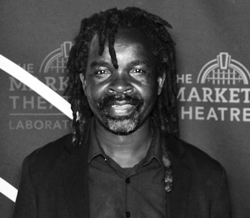How six brave American women fought their way into space against discrimination
Sally Ride, Judy Resnik, Kathy Sullivan, Anna Fisher, Margaret ‘Rhea’ Sneddon and Shannon Lucid made history and opened the way for other women to go to space when they became the first American women to go into space in history. (Two Russian women Valentina first and Svetlana Savitskaya and were the first women in the world to go to space and Sally Ride became the first American woman to go to space).
By Edward Tsumele, CITYLIFE/ARTS Editor

Title: The Six: The Untold Story of America’s first Women Astronauts
Author: Loren Grush
Publisher: Virago Press/Distributed locally By Jonathan Ball Publishers
Space exploration by humans has since Neil Armstrong, Neil A. Armstrong, Michael Collins and Edwin E. Aldrin Jr. at 9:32 a.m. July 16, 1969, flew from Kennedy Space Center’s Launch Complex 39A to walk on the moon has increased significantly with especially competition to explore the world beyond the earth by the US and the Soviet Union becoming fierce.
First done by men with a military background, today even ordinary people with money, lots of it though, are increasingly going to space. However it took six brave women, well educated, some with medical degrees, others with doctorates in the sciences, such as engineering and physics to open the way for women astronaut to go to space.
The first women among the six to make that history for American women was Sally Ride. Sally Ride became the first American woman to go into space when she flew on the space shuttle Challenger on June 18, 1983. She made two shuttle flights and later became a champion for science education and a role model for generations. Ride died of cancer in 2012.
Before these six American pioneers opened the way for other women when NASA allowed women to go to space, mainly as mission specialists, with the role of pilot or mission commander still reserved for men even though some of these pioneering women actually had impressive flight time as commercial pilots. The reason given then was that for one to be a shuttle pilot, they needed to have come from a military background, and yet women before this first recruitment into the NASA shuttle program were not allowed to be pilots in the military.

I got an insight into the women’s struggle to go to space till these six brave women broke that tradition in 1978, when they were the first group of women to be admitted to NASA’s shuttle programme and eventually flew to space in the early 1980s through a new book The Six: The Untold Story of America’s first Women Astronauts by American space journalist Loren Grush.
It was however a long wait for the six to eventually take to the skies flying into orbit spacve, needing a lot of patience and determination. But eventually Sally Ride, Judy Resnik, Kathy Sullivan, Anna Fisher, Margaret ‘Rhea’ Sneddon and Shannon Lucid indeed made history and opened the way for other women to go to space when they became the first American women to go into space in history.
(Two Russian women Valentina Vladimirovna Tereshkova a Russian engineer, first (1963), and Svetlana Savitskaya (19820 and were the first women in the world to go to space and Sally Ride became the first American woman to go to space) did successfully, in some cases outperforming men in the tasks they had to do on space, especially haling payloads from the shuttle deposit them into space for mainly research purposes.
These payloads mainly comprised of satellites the size of a bus. Although because of the weightlessness of the space environment, these bus size satellites were not heavy, one needed a lot of technical ability to carefully haul them out of the shuttle into space, without breaking the whole shuttle apart and kill everyone on board. These women did that very well, as well as other quite intricate tasks on board space. In some cases they were required to come out of the shuttle and walk on space free from the shuttle to perform certain delicate tasks they were required to do.
And so The Six is not a book just about the history of space exploration, but also how women fought their way to go into a space that for a long time was only the reserve of men with a military background.
I like especially the fact that the book traces the careers of all the six women, the tasks they did on space as well as they personal lives on the earth.
The Six is therefore a book that not only should interest not only those interested in exploring the other world beyond earth, but also those interested in the women’s struggle against discrimination by mainly men to get into certain professions, such as being an astronaut, something that does not need one to even have a pilot’s license, but just money, loads of it though.










